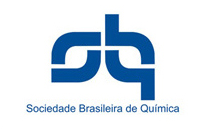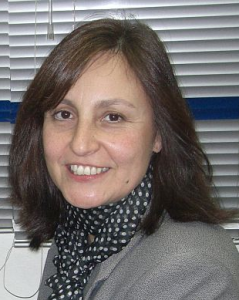What are the reasons that the Brazilian Chemical Society (SBQ) could be considered one of the most advanced academic societies in the country, particularly in scholarly communication? In this interview, Professor Susana I. Córdoba de Torresi of the University of São Paulo (USP) tells us about the policies and efforts of the SBQ in the areas of credibility, visibility and internationalization.
Susana I. Córdoba de Torresi is a professor at the Department of Fundamental Chemistry, Institute of Chemistry of the University of São Paulo – USP. She has her Bachelor’s degree in Physical Chemistry (1983) and a doctorate in Chemical Sciences from the National University of Córdoba (1988). She completed her post-doctoral studies at the Université Pierre et Marie Curie (1990). She became Associate Professor at the Institute of Chemistry at USP in 1999. Among her principal lines of research are: Electrochemistry of Conductive Polymers, Electrointercalation of Transition Metal Oxides, and Electrochromism. She is a member of the editorial committee of the journals Química Nova and the Journal of Electroanalytical Chemistry, and is a reviewer for 15 other international journals.
1- In the field of Chemistry we note that researchers that publish internationally also publish, more often than not, in the two journals of the Brazilian Chemical Society: Journal of the Brazilian Chemical Society (JBCS) and Química Nova (QN). This occurs, without a doubt, much more frequently in this field than in other fields of the natural sciences. What do you think is the reason for this difference?
 I think that this is to do with both the credibility of the Brazilian Chemical Society itself (SBQ) and of the journals it publishes. Having said that, the SBQ has had to put up quite a struggle along with others in the field of Chemistry to have its journals rated in the Qualis system1 of CAPES. For example, in Chemistry the rating of a journal is done without consideration of its Impact Factor. The JBCS, for example, is rated in Chemistry as A2 whose Impact Factor band is greater than 3, yet JBCS itself is barely at Impact factor 1.4. Since the beginning of all this fuss about Qualis, this rating was done for several other journals published in the country. In the specific case of Quimica Nova, this journal is classified at A2 or A1 in fields related to Chemistry, such as Chemical Engineering, Food Engineering and the Geosciences, which also explains this fact.
I think that this is to do with both the credibility of the Brazilian Chemical Society itself (SBQ) and of the journals it publishes. Having said that, the SBQ has had to put up quite a struggle along with others in the field of Chemistry to have its journals rated in the Qualis system1 of CAPES. For example, in Chemistry the rating of a journal is done without consideration of its Impact Factor. The JBCS, for example, is rated in Chemistry as A2 whose Impact Factor band is greater than 3, yet JBCS itself is barely at Impact factor 1.4. Since the beginning of all this fuss about Qualis, this rating was done for several other journals published in the country. In the specific case of Quimica Nova, this journal is classified at A2 or A1 in fields related to Chemistry, such as Chemical Engineering, Food Engineering and the Geosciences, which also explains this fact.
2- The journals JBCS and QN were in existence before SciELO. What is your opinion and that of your colleagues as to whether SciELO influenced the paths taken by these two journals?
SciELO definitely gave these journals more visibility, particularly since our journals’ Web pages are not as sophisticated and do not have as many tools and features as the SciELO platform. In the specific case of QN, the translation tool on the SciELO site was very important to have as was the capability to keep track of downloads. It is important for us to know that QN is a highly read and accessed journal rather than one that is necessarily cited since that is reflected in the Impact Factor.
3- The articles of JBCS are cited by international authors 1.34 times more than by national authors. In the case of QN this relationship is inverted (0.55 times). One plausible explanation is the extensive use of Portuguese in QN versus the exclusive use of English in JBCS. What consideration are the editors of QN giving to this state of affairs?
This fact is well known to the Society and is much examined in the meetings of the editors. The most important thing to clarify here is that each journal has its own well determined and planned mission and objectives within the SBQ. The Society has three other journals in addition to JBCS and QN, and each one has its own “personality” and role. The target audience for Quimica Nova for schools is teachers in elementary and high schools and responds to their needs, whereas the journal Revista Virtual de Química acts primarily as a vehicle to make chemistry more widely known. Química Nova Interativa is a portal for interaction with the general public in order to make chemistry more approachable, especially for young people.
 The objective of QN is to be the principal Ibero-American publication in chemistry and we have achieved this, since we also publish in Spanish. Various strategies were planned for, such as the inclusion of prominent scientists from Latin America, Spain and Portugal on the Editorial Board.
The objective of QN is to be the principal Ibero-American publication in chemistry and we have achieved this, since we also publish in Spanish. Various strategies were planned for, such as the inclusion of prominent scientists from Latin America, Spain and Portugal on the Editorial Board.
QN is also among the top in the world in the JCR rankings when research is made in the field of multidisciplinary and multilingual Chemistry.
4- The Brazilian Society of Chemistry is probably the most advanced academic society in Brazil in terms of publishing policy. What is the Society’s position in the face of the call made by SciELO to improve the professionalism and internationalization of journals?
Part of this question has been answered before. The Society offers complete support to its editors, and this is done by hiring staff dedicated exclusively to the journals. In the case of Quimica Nova, we have three full time staff dedicated to the journal with degrees in Chemistry (two with Masters degrees, one with a Doctorate) who are fluent in English and Spanish and who have a broad understanding of informatics. In addition, internationalization comes about as a result of credibility, frequency of publication, etc., as well as having a close relationship with other Chemical Societies (especially American and British ones) that also have outstanding editorial practices.
1 http://www.capes.gov.br/avaliacao/qualis
Translated from the original in Portuguese by Nicholas Cop Consulting.
Como citar este post [ISO 690/2010]:














Recent Comments